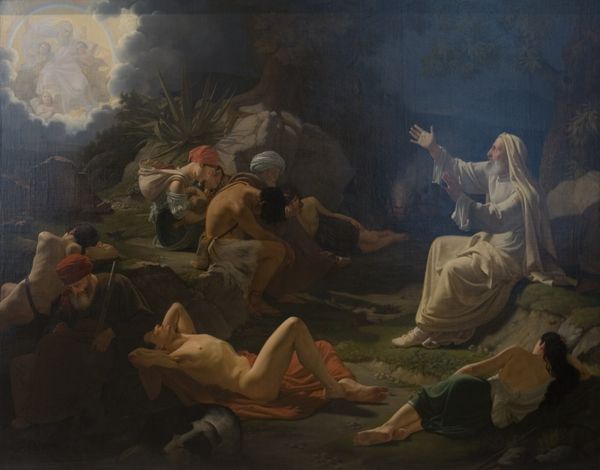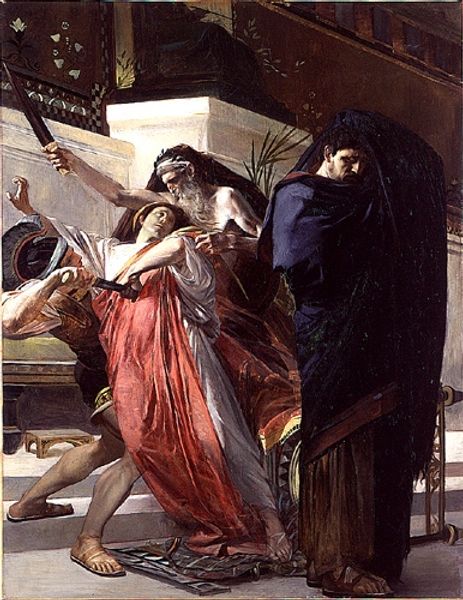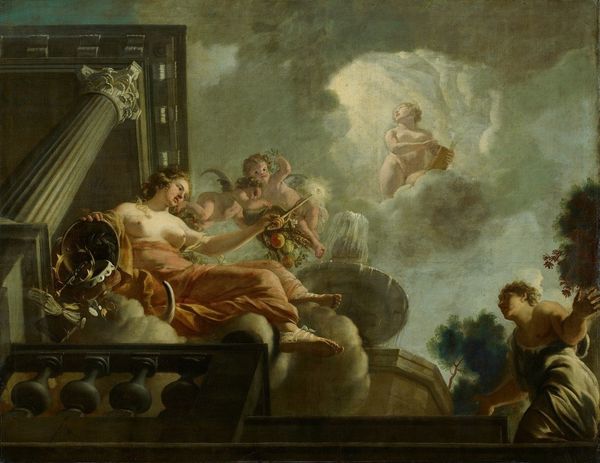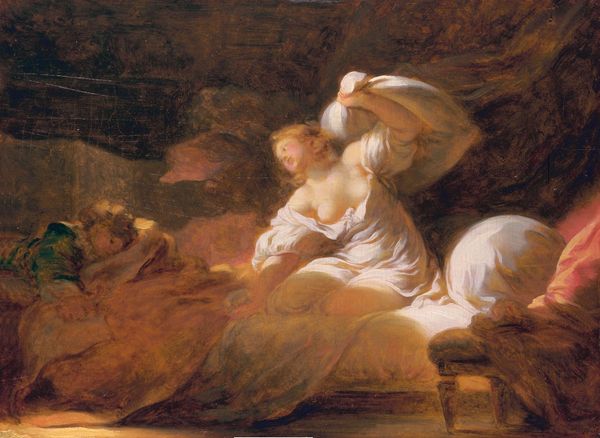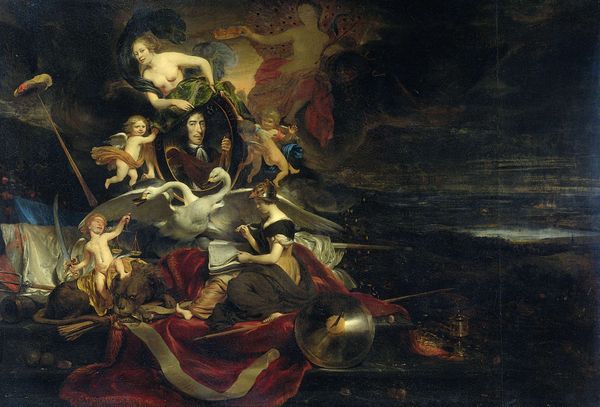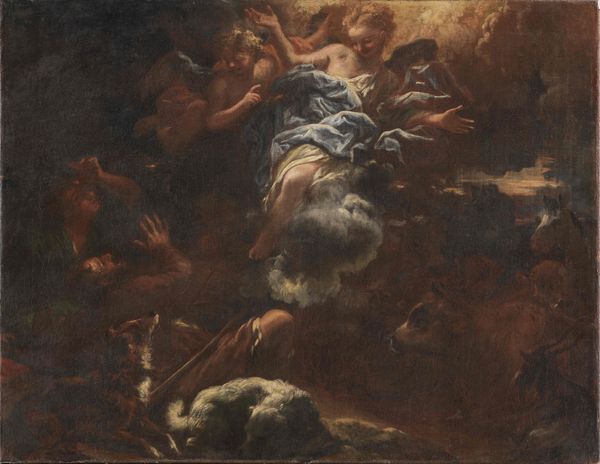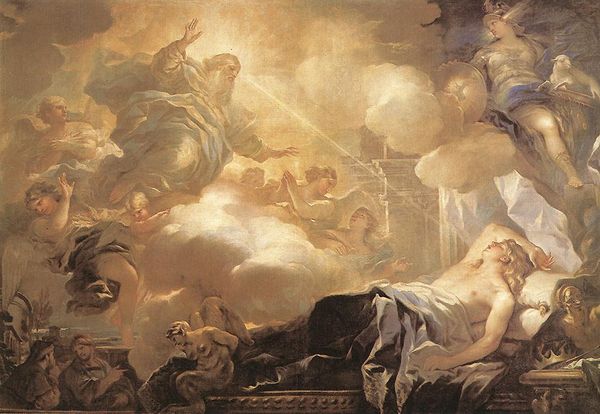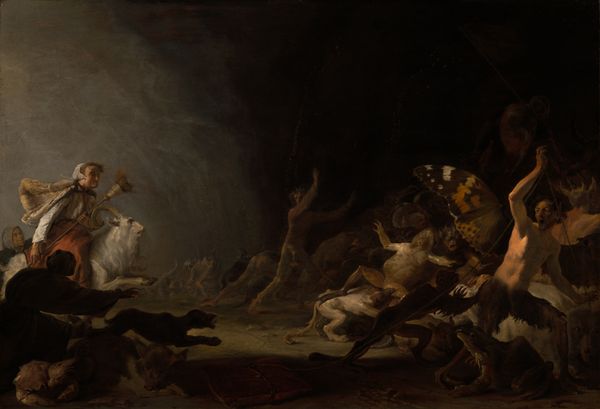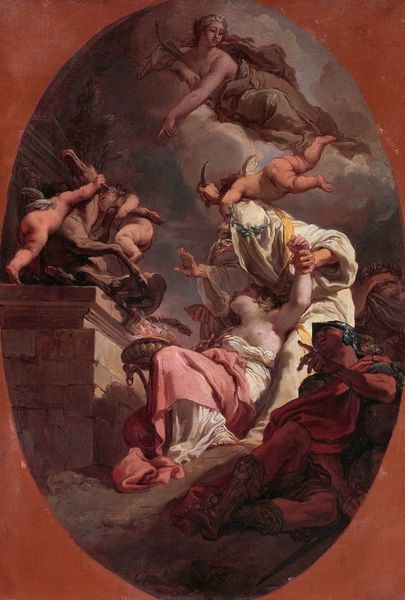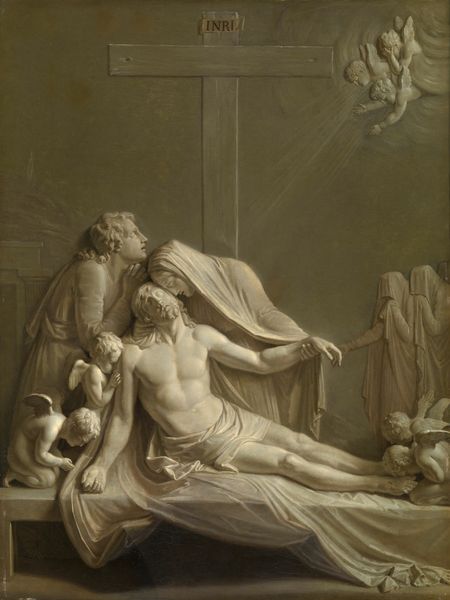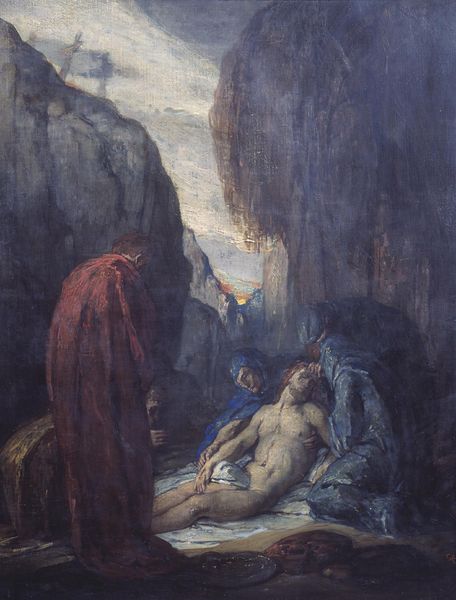
Copyright: Public domain
Curator: I'm immediately drawn into the somber and serene atmosphere, like a lullaby woven with melancholy. The pallid moonlight enhances the figure's stillness. Editor: And I see layers of cultural memory coalescing here, through Jean Lecomte du Nouÿ’s 1874 painting, "A Eunuch's Dream." This oil on canvas reflects a surge of Western interest in the Middle East known as Orientalism, coupled with strains of Romanticism and academic painting traditions. Curator: The artist definitely sets the stage with an expansive vista that is evocative. So many symbolic markers… a lone bird, those veiled figures, and an erotic dream. It seems loaded with a tension born from confinement and desire, am I reading too much into that? Editor: Not at all. The spectral figures can be understood as wish-fulfillment, with the city stretching before him and the winged messenger. Notice, however, how that dream figure floats impossibly above him? It reflects a yearning for something unattainable. Consider that the presence of eunuchs within the Ottoman harems of the time was precisely about maintaining boundaries, control, and order. This creates a strong visual language here of subjugation. Curator: So it becomes a window onto internal conflicts visualized through codified symbols, filtered, as it were, through Western imagination? That handprint motif looks interesting as well… Editor: It's an intricate layering of cultural lenses and aesthetic choices, with that recurring “Hand of Fatima”, offering, perhaps, an element of magical protection amid the layers of symbolic loss and constraint depicted. Curator: So much history condensed into a single dream. It highlights the artist's profound curiosity, his sensitivity towards cultural context as he knew it, while leaving much open to interpretation, which, I believe, constitutes the real strength of art. Editor: Absolutely, the power lies in its ability to invite dialogue, not just about its subject matter but also about our evolving perceptions. It certainly offers ample food for thought as we move through our own contemporary realities.
Comments
No comments
Be the first to comment and join the conversation on the ultimate creative platform.
